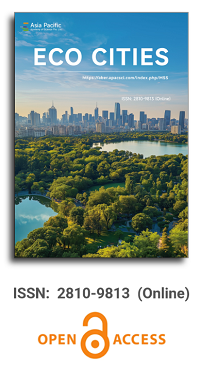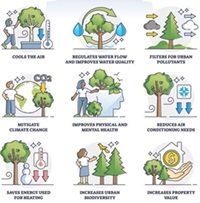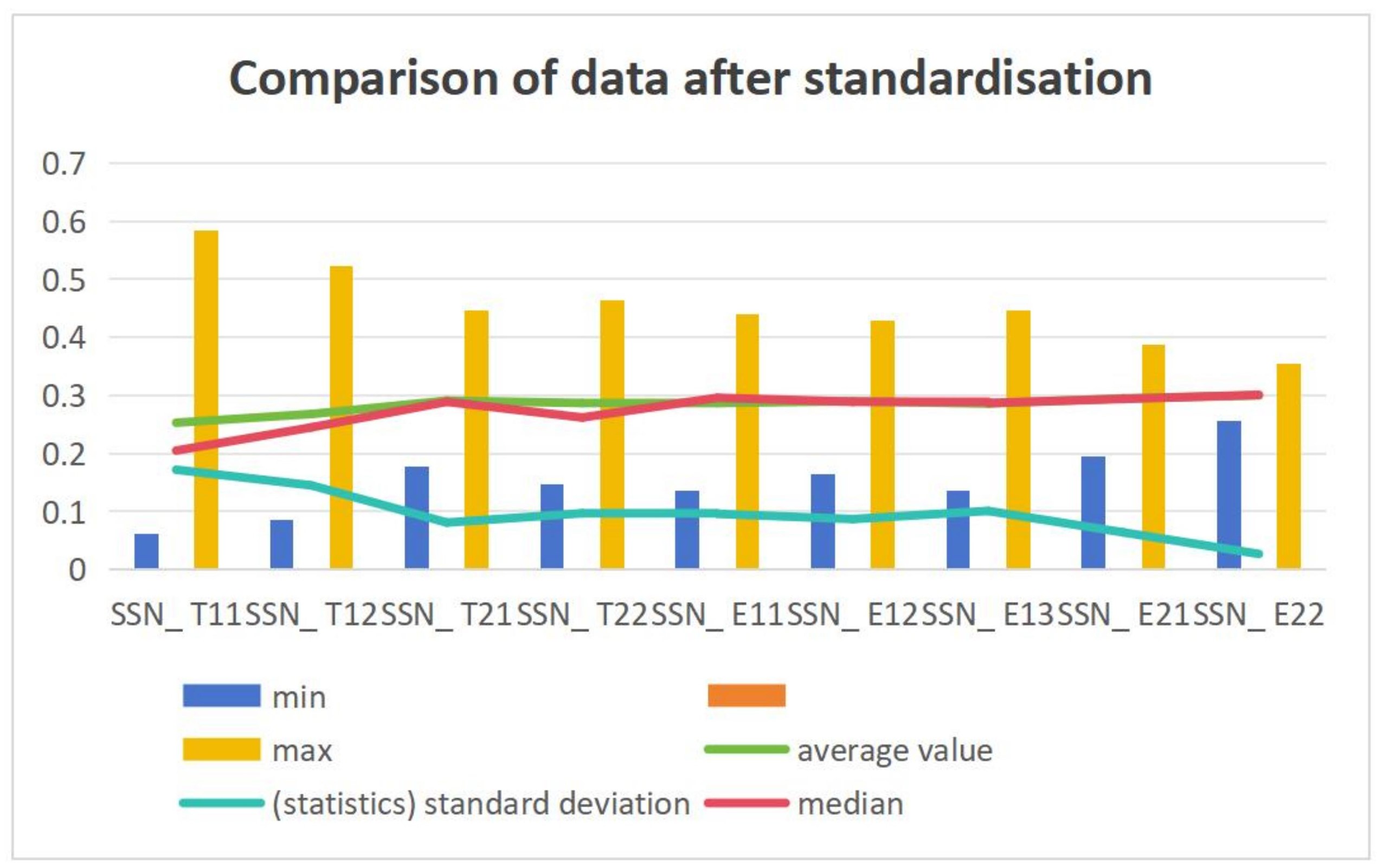


Analysis of carbon fixation and humidification ability of indoor cultivation of Ficus pandurata Hance
Vol 6, Issue 1, 2025
Download PDF
Abstract
To investigate the impact of prolonged exposure to enclosed, low-light environments on carbon fixation and oxygen release in green plants, as well as their capacity to regulate transpiration and humidification, this study utilized Ficus pandurata Hance, a common indoor ornamental plant, as the experimental subject to examine the net photosynthetic rate (Pn) and transpiration rate (Tr). LI-6800 portable photosynthesizer was employed to assess the Pn and Tr of Ficus pandurata Hance cultivated under varying temperatures (15 ℃, 20 ℃, 25 ℃, 30 ℃, 35 ℃) and different CO2 concentrations (400 µmol·mol−1, 800 µmol·mol−1, 1200 µmol·mol−1) at different parts of the room (indoors or near windows). The results of the light response curve and the CO2 response curve measurements indicate that the Pn of Ficus pandurata Hance shows a trend of initially increasing and then decreasing as the light intensity or CO2 concentration increases. It is noteworthy that under different photosynthetically active radiation (PAR) and CO2 concentrations, the maximum Pn of Ficus pandurata Hance cultivated by a window is significantly higher than that of indoor-cultivated plants. Under appropriate temperature control (20~30 ℃), the Pn and Tr of Ficus pandurata Hance are highest at 800 µmol·mol−1 CO2 concentration. Under appropriate ventilation conditions (CO2 concentration < 1200 µmol·mol−1), the plants have stronger carbon fixation ability under appropriate temperature conditions and stronger transpiration—induced humidification ability under non-low temperature (T ≥ 20 ℃) conditions. To sum up, in the case of high CO2 concentration caused by poor indoor ventilation and dense population, cultivation of Ficus pandurata Hance by the window and proper control of temperature above 20 ℃ can obtain good ecological benefits of carbon fixation, oxygen release, transpiration and humidification.
Keywords
References
- Chuang KJ, Lee CY, Wang ST, et al. The Association between Indoor Carbon Dioxide Reduction by Plants and Health Effects. Indoor Air. 2023; 2023: 1-6. doi: 10.1155/2023/1558047
- Tham KW. Indoor air quality and its effects on humans—A review of challenges and developments in the last 30 years. Energy and Buildings. 2016; 130: 637-650. doi: 10.1016/j.enbuild.2016.08.071
- Yan LY. Experimental study on the influence of active living wall on indoor thermal environment and CO2 concentration. Qingdao University of Technology. 2022.
- Liu F, Yan L, Meng X, et al. A review on indoor green plants employed to improve indoor environment. Journal of Building Engineering. 2022; 53: 104542. doi: 10.1016/j.jobe.2022.104542
- Torpy F, Zavattaro M, Irga P. Green wall technology for the phytoremediation of indoor air: a system for the reduction of high CO2 concentrations. Air Quality, Atmosphere & Health. 2016; 10(5): 575-585. doi: 10.1007/s11869-016-0452-x
- Gubb C, Blanusa T, Griffiths A, et al. Can houseplants improve indoor air quality by removing CO2 and increasing relative humidity? Air Quality, Atmosphere & Health. 2018; 11(10): 1191-1201. doi: 10.1007/s11869-018-0618-9
- Sandamali GYHKI, Nishani RIV, Priyantha DM. The Entophytic and Potting Soil Bacteria of the Sansevieria trifasciata Plant Have a Purifying Impact on Indoor Toluene. International Journal of Environmental Research. 2023; 17(4). doi: 10.1007/s41742-023-00538-6
- Yue XC, Yang QZ. Indoor air environmental pollution and environmental protection. Resources Economization & Environmental Protection. 2021.
- Xing HS, Wu JM, Chen J, et al. Research progress on limiting factors of plant photosynthesis and vegetation productivity. Acta Ecologica Sinica. 2023.
- Arnold PA, Shuo W, Notarnicola RF, et al. Testing the evolutionary potential of an alpine plant: phenotypic plasticity in response to growth temperature outweighs parental environmental effects and other genetic causes of variation. Journal of Experimental Botany. 2024.
- Hu P, Ma J, Kang SJ, et al. Chlorophyllide-a Oxygenase 1 (OsCAO1) Over-Expression Affects Rice Photosynthetic Rate and Grain Yield. Rice Science. 2023; 30(2): 87-91. doi: 10.1016/j.rsci.2022.05.006
- Wu ZJ, Zhang DD. Study on Photosynthetic Characteristics of Ficus Plants. Journal of Southwest University (Natural Science Edition). 2014.
- Ye Z, Suggett DJ, Robakowski P, et al. A mechanistic model for the photosynthesis–light response based on the photosynthetic electron transport of photosystem II in C3 and C4 species. New Phytologist. 2013; 199(1): 110-120. doi: 10.1111/nph.12242
- Chen SP. Cultivation and management of Ficus pandurata Hance. China Flowers & Horticulture. 2019.
- Zhang X, Qin LH, Liu QJ. Relationship between photosynthetic characteristics and litter decomposition rate of main tree species in Changbai Mountain broadleaved Korean pine forest of northeastern China. Journal of Beijing Forestry University. 2023.
- Ye ZP. A review on modeling of responses of photosynthesis to light and CO2. Chinese Journal of Plant Ecology. 2023.
- Zhang X, Wargocki P, Lian Z. Physiological responses during exposure to carbon dioxide and bioeffluents at levels typically occurring indoors. Indoor Air. 2016; 27(1): 65-77. doi: 10.1111/ina.12286
- Wu CF, Guo J, Wang GB. Morphological and physiological responses of male and female Ginkgo biloba to temperature changes. Journal of Nanjing Forestry University (Natural Sciences Edition). 2024.
- Mohmed G, Heynes X, Naser A, et al. Modelling daily plant growth response to environmental conditions in Chinese solar greenhouse using Bayesian neural network. Scientific Reports. 2023; 13(1). doi: 10.1038/s41598-023-30846-y
- Mo ZK, Li MZ, Wang B. Spatiotemporal variation trend analysis of atmospheric CO2 fertilization effect of forests in Heilongjiang Province. Journal of Northeast Forestry University. 2022.
- Shibaeva TG, Mamaev AV, Sherudilo EG, et al. Responses of Tomato and Eggplant to Abnormal Light/Dark Cycles and Continuous Lighting. Russian Journal of Plant Physiology. 2024; 71(1). doi: 10.1134/s1021443723602951
- Wu ZJ, Zhang Y, Liu YQ, et al. Effect of Soil Drought Stress on Growth and Physiological Characteristics of Ficus lyrata. Northern Horticulture. 2011.
- Dong D, Tai Y, Luo Y, et al. Numerical simulation of effect of vegetation configuration on human thermal comfort. Journal of Environmental and Occupational Medicine. 2023.
Supporting Agencies
Copyright (c) 2025 Jing Li, Xitong Cao, Xinyu Lu, Guohao Li, Runzhuo Wu, Kangshuo Xu
License URL: https://creativecommons.org/licenses/by/4.0/

This site is licensed under a Creative Commons Attribution 4.0 International License (CC BY 4.0).

Chinese Academy of Sciences, China
Indexing & Archiving
Asia Pacific Academy of Science Pte. Ltd. (APACSCI) specializes in international journal publishing. APACSCI adopts the open access publishing model and provides an important communication bridge for academic groups whose interest fields include engineering, technology, medicine, computer, mathematics, agriculture and forestry, and environment.



.jpg)

.jpg)



